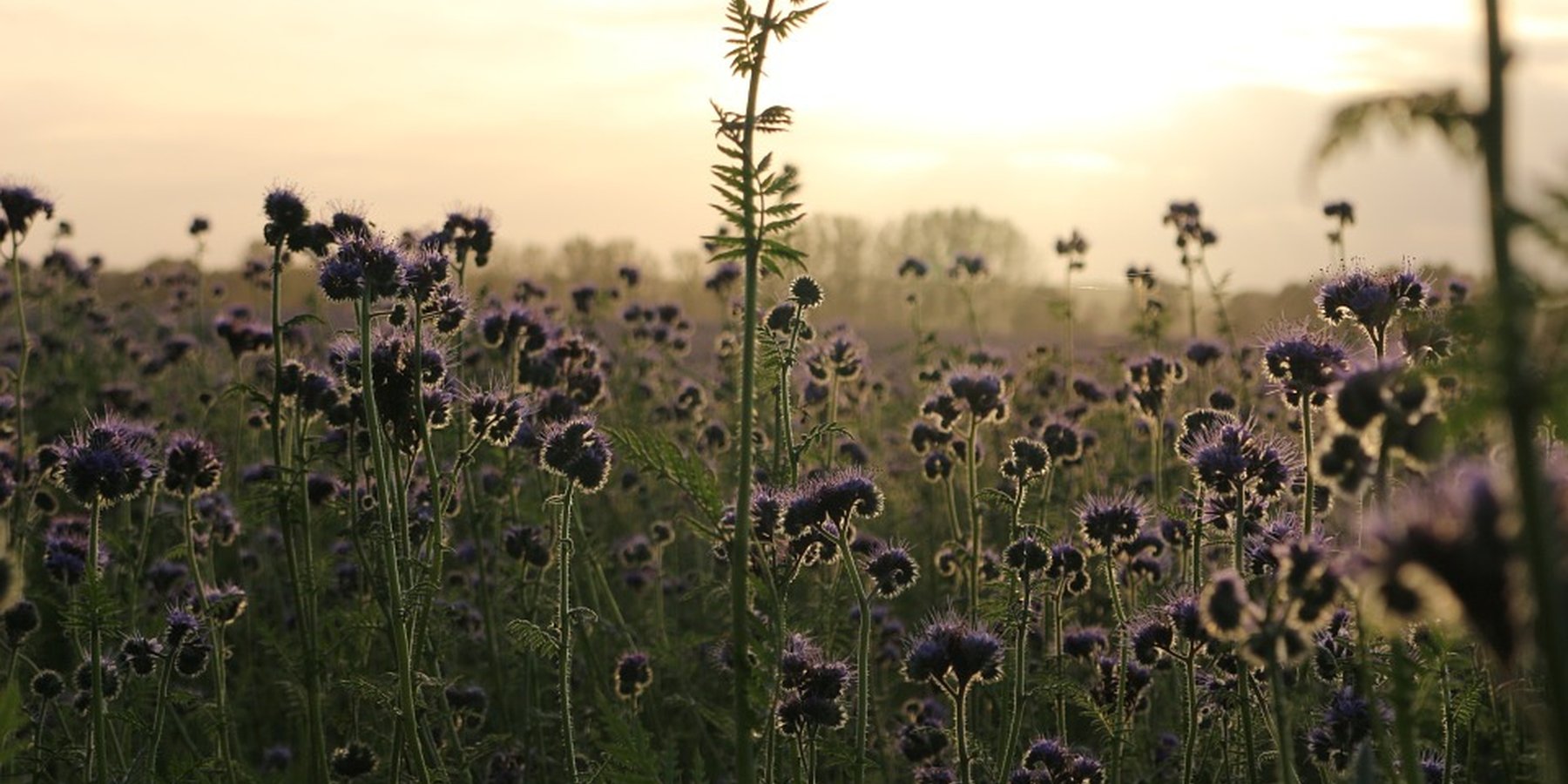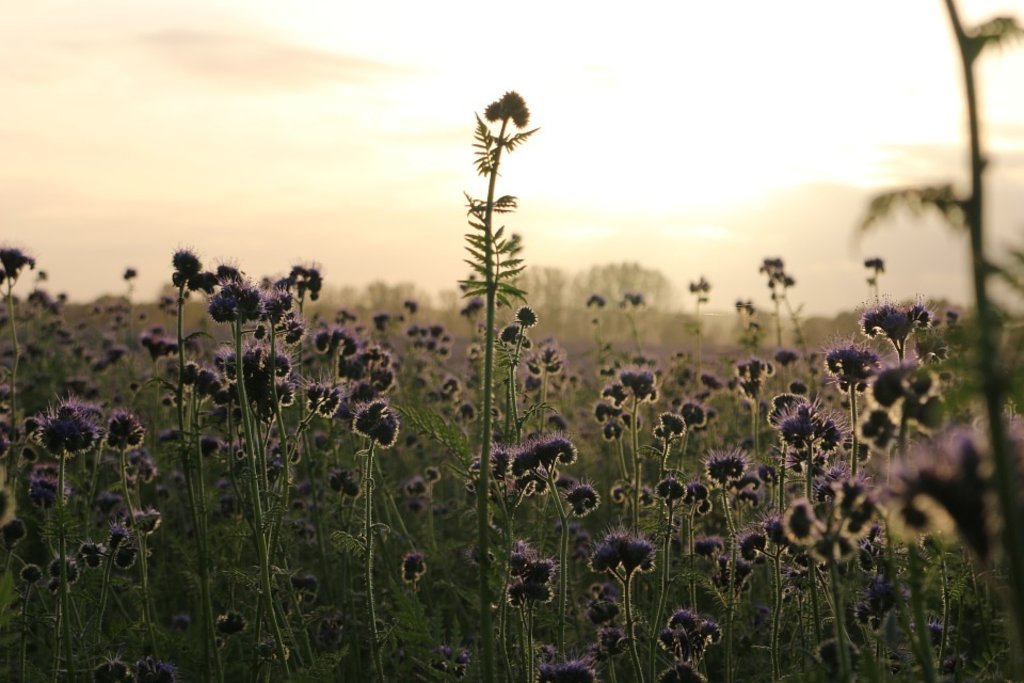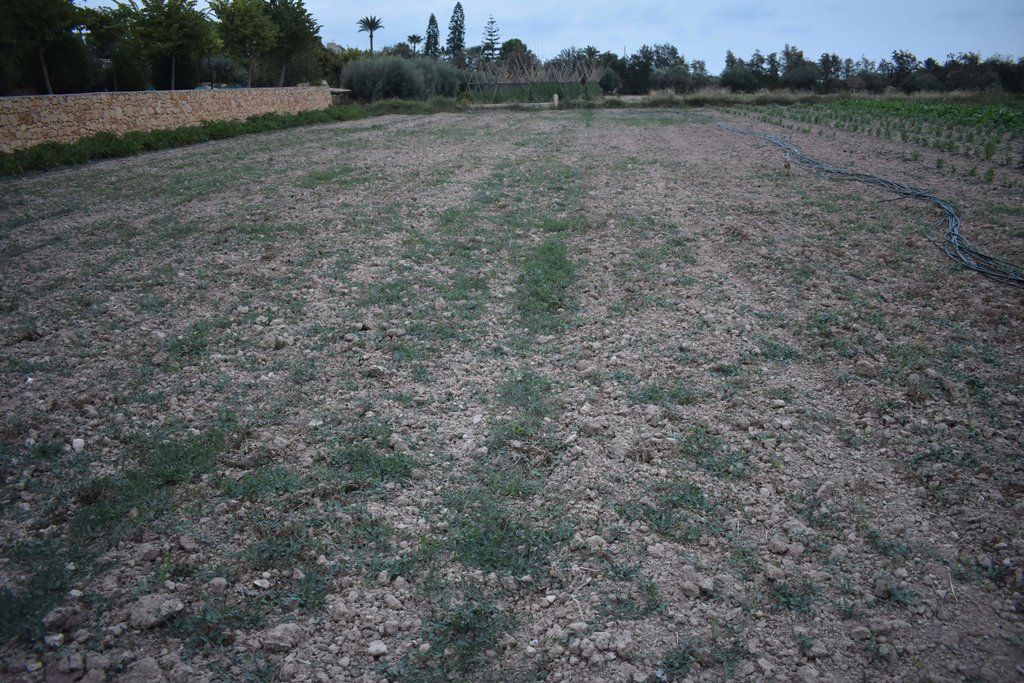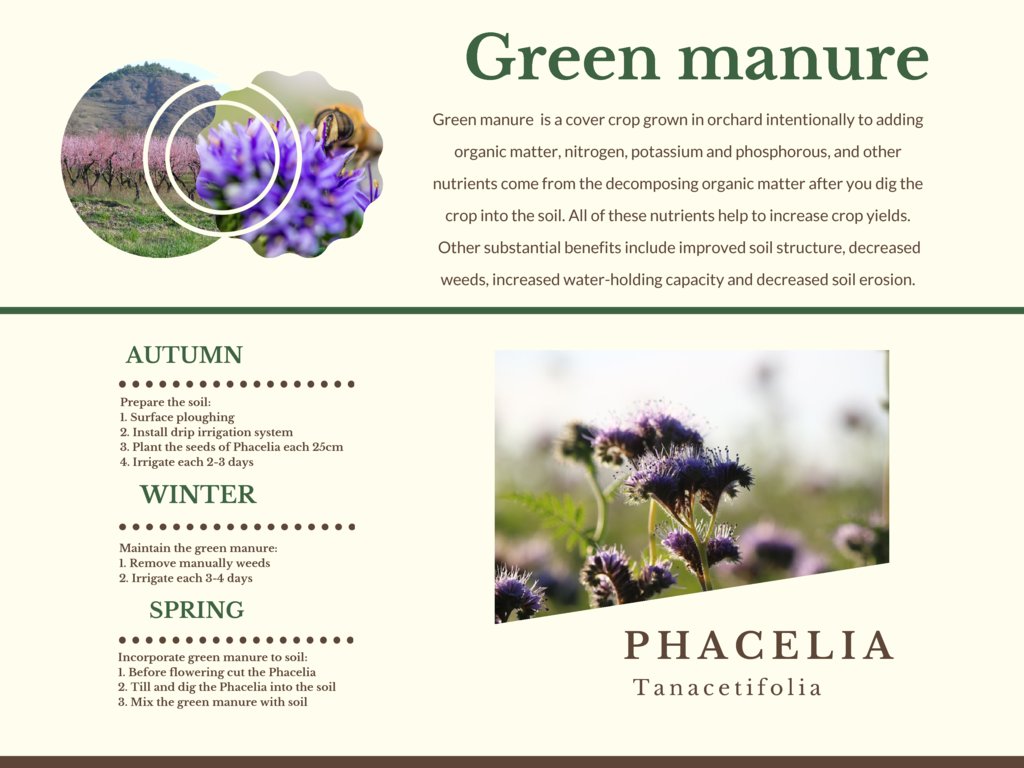Annual green manure with Phacelia tanacetifolia in southern Spain [Spain]
- Creation:
- Update:
- Compiler: Alicia Morugán-Coronado
- Editor: –
- Reviewer: Ursula Gaemperli
Abono verde con Facelia
technologies_3219 - Spain
View sections
Expand all Collapse all1. General information
1.2 Contact details of resource persons and institutions involved in the assessment and documentation of the Technology
Name of project which facilitated the documentation/ evaluation of the Technology (if relevant)
Interactive Soil Quality assessment in Europe and China for Agricultural productivity and Environmental Resilience (EU-iSQAPER)Name of the institution(s) which facilitated the documentation/ evaluation of the Technology (if relevant)
Agrochesmistry and Environment Department, University Miguel Hernandez (UMH) - Spain1.3 Conditions regarding the use of data documented through WOCAT
When were the data compiled (in the field)?
17/10/2017
The compiler and key resource person(s) accept the conditions regarding the use of data documented through WOCAT:
Yes
1.4 Declaration on sustainability of the described Technology
Is the Technology described here problematic with regard to land degradation, so that it cannot be declared a sustainable land management technology?
No
2. Description of the SLM Technology
2.1 Short description of the Technology
Definition of the Technology:
Application of annual green manure with Phacelia Tanacetifolia sp. to improve soil quality and productivity on agricultural land.
2.2 Detailed description of the Technology
Description:
1. This sustainable land management technology was established on agricultural land in Mutxamel (region of Alicante) in the municipality of Valencia (Comunidad Valenciana), Spain. Agricultural production in this region is of a very high quality and is intensely competitive. Despite this, the region’s traditional agriculture industry is nonetheless being overtaken by other sectors, with the scarcity of water emerging as a key factor in this shift. The main orchards in this region are: citrus, lemon, almonds and olives trees, other common crops are vegetables, such as tomatoes, lettuce, etc.
2. The SLM technology focuses on annual cultivation of green manure in the form of the plant of Phacelia tanacetifolia. Phacelia tanacetifolia (Hydrophyllaceae) is commonly known as Lacy or Tancy Phacelia (syn. Purple Tancy, Fiddleneck and Valley Velvenia). Native to Californian drylands, chaparral and Central oak woodland, P. tanacetifolia has been naturalised throughout the western United States and frequently in Europe, whereas it has been extensively used as a nectar crop up and as annual green manure worldwide. Phacelia is listed as one of the top 20 honey-producing flowers for honeybees and is very rich in both nectar and pollen the lavender-coloured flowers attract bees, butterflies and other pollinating insects.
3. Initially, the main objective of the land user applying the technology was to improve the soil quality and the crop production in the vegetable fields (cabbages, tomatoes, lettuce, chards, spinach) by cultivating the Phacelia plant as an annual green manure. In other words, the maintenance of a specific cover crop such as Phacelia tanacetifolia grown in the orchard is intended to add organic matter, nitrogen, potassium and phosphorous and other nutrients coming from the decomposed manuring plant after it is worked into the soil.
4. The land user prepares the soil during September or October by ploughing the surface of soil and then sowing the Phacelia tanacetifolia seed thinly at a rate of 1 gram per square meter and within 25 cm per plant. In the examined case, the land user installed a drip irrigation system to irrigate every two to three days in autumn or every three to four days in winter. During winter time it is recommended to remove manually spontaneous plants. Before seed formation (February or March) the land user cuts the plant and then he is tilling and digging the cover crop gently into the soil, in order to incorporate all the nutrients of this green manure into the soil. It is crucial to cut the plant before seed formation; otherwise the nutrient capacity to the soil is reduced.
5. The major benefit of the intercrop of Phacelia tanacetifolia is the short term enhancement of the soil organic content. It keeps the soil more fertile during one year and therefore it has to be cultivated every year. In consequence also an improvement of the orchard productivity has been determined. Other substantial benefits are the stronger N fixation, the decrease in weeds, and the improved water-holding capacity; further to be mentioned, the better soil aggregation, as green manure crops help to improve the soil structure over time, and by this the aeration increases, and water infiltration and root growth are enhanced. Finally, the improved soil cover helps to control the risk of soil erosion.
6. One major disadvantage is the fact that Phacelia is not polyvalent. It is only an annual green manure plant, but unfortunately not also a marketable crop that could create monetary benefits in addition. Other disadvantages mentioned by the land user are the relative high establishment expenses, as for example for the irrigation equipment and as well the maintenance costs.
2.3 Photos of the Technology
2.5 Country/ region/ locations where the Technology has been applied and which are covered by this assessment
Country:
Spain
Region/ State/ Province:
Alicante
Further specification of location:
Mutxamel
Map
×2.6 Date of implementation
Indicate year of implementation:
2014
2.7 Introduction of the Technology
Specify how the Technology was introduced:
- through land users' innovation
Comments (type of project, etc.):
The land user consulted several online sites about different green manure types.
3. Classification of the SLM Technology
3.1 Main purpose(s) of the Technology
- improve production
- reduce, prevent, restore land degradation
- conserve ecosystem
- preserve/ improve biodiversity
3.2 Current land use type(s) where the Technology is applied

Cropland
- Annual cropping
Main crops (cash and food crops):
Phacelia Tanacetifolia as a green manure to prepare the soil to rotation crops: cabbages, tomatoes, lettuce, chards, spinach.
If land use has changed due to the implementation of the Technology, indicate land use before implementation of the Technology:
Grapevine orchard for wine production
3.3 Further information about land use
Water supply for the land on which the Technology is applied:
- full irrigation
Comments:
1 hour of irrigation during the week in summer period, 2-3 days per week in autumn and spring season and 1 day per week during winter.
Number of growing seasons per year:
- 1
Specify:
March
3.4 SLM group to which the Technology belongs
- rotational systems (crop rotation, fallows, shifting cultivation)
- improved ground/ vegetation cover
- integrated soil fertility management
3.5 Spread of the Technology
Specify the spread of the Technology:
- evenly spread over an area
If the Technology is evenly spread over an area, indicate approximate area covered:
- < 0.1 km2 (10 ha)
3.6 SLM measures comprising the Technology

agronomic measures
- A1: Vegetation/ soil cover
- A2: Organic matter/ soil fertility
- A3: Soil surface treatment
3.7 Main types of land degradation addressed by the Technology

chemical soil deterioration
- Cn: fertility decline and reduced organic matter content (not caused by erosion)

physical soil deterioration
- Pc: compaction

biological degradation
- Bq: quantity/ biomass decline
- Bs: quality and species composition/ diversity decline
3.8 Prevention, reduction, or restoration of land degradation
Specify the goal of the Technology with regard to land degradation:
- prevent land degradation
- reduce land degradation
4. Technical specifications, implementation activities, inputs, and costs
4.1 Technical drawing of the Technology
4.2 Technical specifications/ explanations of technical drawing
Species used: Phacelia tanacetifolia
Family: Hydrophyllaceae
Common name: Lacy Phacelia, Wildlife, Set-aside, Cover Crop or Green Manure
Origin: North America
Height of plant: 60-90cm
Spacing between plants: 25cm
Sowing period: September-October
Growing period: Winter
Flowering period: February-March
Flower: Lavender-Mauve-Blue
Other specifications: Perfect honey-producing flowers
4.3 General information regarding the calculation of inputs and costs
Specify how costs and inputs were calculated:
- per Technology area
Indicate size and area unit:
0.2 ha
If using a local area unit, indicate conversion factor to one hectare:
2 acres
other/ national currency (specify):
euro
Indicate exchange rate from USD to local currency (if relevant): 1 USD =:
0.85
Indicate average wage cost of hired labour per day:
10€/hour
4.5 Costs and inputs needed for establishment
| Specify input | Unit | Quantity | Costs per Unit | Total costs per input | % of costs borne by land users | |
|---|---|---|---|---|---|---|
| Equipment | tractor | piece | 1.0 | 3300.0 | 3300.0 | 100.0 |
| Equipment | manual sowing machine | piece | 1.0 | 200.0 | 200.0 | 100.0 |
| Equipment | drop irrigation pipe | piece | 4.0 | 18.0 | 72.0 | 100.0 |
| Equipment | weed whacker | piece | 1.0 | 14.0 | 14.0 | 100.0 |
| Equipment | draw hoe | piece | 1.0 | 30.0 | 30.0 | 100.0 |
| Total costs for establishment of the Technology | 3616.0 | |||||
4.6 Maintenance/ recurrent activities
| Activity | Type of measure | Timing/ frequency | |
|---|---|---|---|
| 1. | Tillage | Agronomic | before plant green manure |
| 2. | Planting | Agronomic | September - October |
| 3. | Irrigation | Agronomic | after planting the green manure |
| 4. | remove weeds | Agronomic | during the whole process |
| 5. | cut the Phacelia | Agronomic | before seed formation (march) |
| 6. | mix the green manure with soil | Agronomic | march |
4.7 Costs and inputs needed for maintenance/ recurrent activities (per year)
| Specify input | Unit | Quantity | Costs per Unit | Total costs per input | % of costs borne by land users | |
|---|---|---|---|---|---|---|
| Labour | planting | person-hour | 6.0 | 10.0 | 60.0 | 100.0 |
| Labour | remove weeds | person-hour | 24.0 | 10.0 | 240.0 | 100.0 |
| Labour | cutting plants | person-hour | 8.0 | 10.0 | 80.0 | 100.0 |
| Labour | tillage and mix the plants into soil | person-hour | 8.0 | 10.0 | 80.0 | 100.0 |
| Plant material | seed of Phacelia tanacetifolia | bag | 20.0 | 13.0 | 260.0 | 100.0 |
| Other | Drop irrigation installation | person-hour | 6.0 | 10.0 | 60.0 | 100.0 |
| Total costs for maintenance of the Technology | 780.0 | |||||
Comments:
The cost for the equipment to execute the recurent activities are listed under the establishment costs.
All the work is carried out by the land user and her family.
Each bag of Phacelia contains 100 gr approximately.
4.8 Most important factors affecting the costs
Describe the most determinate factors affecting the costs:
The cost to establish and maintain this technology is relatively high but it is compensated with the monetary gains of her other productive orchard land.
5. Natural and human environment
5.1 Climate
Annual rainfall
- < 250 mm
- 251-500 mm
- 501-750 mm
- 751-1,000 mm
- 1,001-1,500 mm
- 1,501-2,000 mm
- 2,001-3,000 mm
- 3,001-4,000 mm
- > 4,000 mm
Specify average annual rainfall (if known), in mm:
365.00
Specifications/ comments on rainfall:
rainfall in autumn (october-november)
Agro-climatic zone
- semi-arid
18ºC of average
https://www.meteoclimatic.net/perfil/ESPVA0300000003110C
5.2 Topography
Slopes on average:
- flat (0-2%)
- gentle (3-5%)
- moderate (6-10%)
- rolling (11-15%)
- hilly (16-30%)
- steep (31-60%)
- very steep (>60%)
Landforms:
- plateau/plains
- ridges
- mountain slopes
- hill slopes
- footslopes
- valley floors
Altitudinal zone:
- 0-100 m a.s.l.
- 101-500 m a.s.l.
- 501-1,000 m a.s.l.
- 1,001-1,500 m a.s.l.
- 1,501-2,000 m a.s.l.
- 2,001-2,500 m a.s.l.
- 2,501-3,000 m a.s.l.
- 3,001-4,000 m a.s.l.
- > 4,000 m a.s.l.
Indicate if the Technology is specifically applied in:
- not relevant
Comments and further specifications on topography:
the orchard is flat and 77 m.a.l.s.
5.3 Soils
Soil depth on average:
- very shallow (0-20 cm)
- shallow (21-50 cm)
- moderately deep (51-80 cm)
- deep (81-120 cm)
- very deep (> 120 cm)
Soil texture (topsoil):
- medium (loamy, silty)
Soil texture (> 20 cm below surface):
- medium (loamy, silty)
Topsoil organic matter:
- high (>3%)
If available, attach full soil description or specify the available information, e.g. soil type, soil PH/ acidity, Cation Exchange Capacity, nitrogen, salinity etc.
pH 8.1; N: 2.7 g/kg, electrical conductivity 2630 µS/cm, available P 7.3%
5.4 Water availability and quality
Ground water table:
on surface
Availability of surface water:
good
Water quality (untreated):
for agricultural use only (irrigation)
Is water salinity a problem?
Yes
Specify:
high salt content
Is flooding of the area occurring?
No
5.5 Biodiversity
Species diversity:
- medium
Habitat diversity:
- low
5.6 Characteristics of land users applying the Technology
Sedentary or nomadic:
- Sedentary
Market orientation of production system:
- mixed (subsistence/ commercial
Off-farm income:
- > 50% of all income
Relative level of wealth:
- average
Individuals or groups:
- individual/ household
Level of mechanization:
- manual work
Gender:
- women
Age of land users:
- middle-aged
5.7 Average area of land owned or leased by land users applying the Technology
- < 0.5 ha
- 0.5-1 ha
- 1-2 ha
- 2-5 ha
- 5-15 ha
- 15-50 ha
- 50-100 ha
- 100-500 ha
- 500-1,000 ha
- 1,000-10,000 ha
- > 10,000 ha
Is this considered small-, medium- or large-scale (referring to local context)?
- small-scale
Comments:
The size of the whole orchard is approximately 1-2ha, only in less of a 0.5ha the technology was applied every year.
5.8 Land ownership, land use rights, and water use rights
Land ownership:
- individual, not titled
Land use rights:
- leased
Water use rights:
- leased
5.9 Access to services and infrastructure
health:
- poor
- moderate
- good
education:
- poor
- moderate
- good
technical assistance:
- poor
- moderate
- good
employment (e.g. off-farm):
- poor
- moderate
- good
markets:
- poor
- moderate
- good
energy:
- poor
- moderate
- good
roads and transport:
- poor
- moderate
- good
drinking water and sanitation:
- poor
- moderate
- good
financial services:
- poor
- moderate
- good
6. Impacts and concluding statements
6.1 On-site impacts the Technology has shown
Socio-economic impacts
Income and costs
expenses on agricultural inputs
Comments/ specify:
High short term costs but low medium and long term costs expected
workload
Comments/ specify:
After green manure application less workload in medium and long term is expected.
Ecological impacts
Soil
soil moisture
Comments/ specify:
Increasing water holding capacity of the soil is observed after green manure application.
soil cover
Comments/ specify:
Covering the soil with Phacelia the soil surface is covered also after harvest of the main crops.
soil compaction
Comments/ specify:
Less soil compaction due to better soil structure and due to the green manure application.
nutrient cycling/ recharge
Comments/ specify:
After first anual green manure in the soil the land user observed an enhancement of nutrient content in the soil.
soil organic matter/ below ground C
Comments/ specify:
Applying a green manure every year the land user detected an increase in soil organic matter on soil.
Biodiversity: vegetation, animals
animal diversity
Comments/ specify:
With Phacelia the colony of honey bees and ohter insect species has been increased during the flowering period.
beneficial species
Comments/ specify:
Honey bees are attracted to flowers for the pollen of Phacelia before cut the plant in seeding process formation.
6.2 Off-site impacts the Technology has shown
damage on neighbours' fields
Comments/ specify:
No pollution by herbicides/pesticides.
impact of greenhouse gases
Comments/ specify:
Green manure or vegetation cover reduced greenhouse gas emissions.
6.3 Exposure and sensitivity of the Technology to gradual climate change and climate-related extremes/ disasters (as perceived by land users)
Gradual climate change
Gradual climate change
| Season | Type of climatic change/ extreme | How does the Technology cope with it? | |
|---|---|---|---|
| seasonal rainfall | autumn | increase | moderately |
Climate-related extremes (disasters)
Climatological disasters
| How does the Technology cope with it? | |
|---|---|
| drought | moderately |
Hydrological disasters
| How does the Technology cope with it? | |
|---|---|
| flash flood | moderately |
Biological disasters
| How does the Technology cope with it? | |
|---|---|
| insect/ worm infestation | very well |
6.4 Cost-benefit analysis
How do the benefits compare with the establishment costs (from land users’ perspective)?
Short-term returns:
neutral/ balanced
Long-term returns:
very positive
How do the benefits compare with the maintenance/ recurrent costs (from land users' perspective)?
Short-term returns:
slightly negative
Long-term returns:
very positive
Comments:
The land user had problems to cope with the money input to establish the SLM technology at the beginning of the process, but in long-term it will be better.
6.5 Adoption of the Technology
- single cases/ experimental
Of all those who have adopted the Technology, how many have did so spontaneously, i.e. without receiving any material incentives/ payments?
- 90-100%
Comments:
The land user did not receive any funding to establish the technology.
6.6 Adaptation
Has the Technology been modified recently to adapt to changing conditions?
No
6.7 Strengths/ advantages/ opportunities of the Technology
| Strengths/ advantages/ opportunities in the land user’s view |
|---|
| Enhacement of soil organic matter |
| Increase in honey bees colony during the flowering time, before plant cutting in seed formation period. |
| Strengths/ advantages/ opportunities in the compiler’s or other key resource person’s view |
|---|
| Reduction of soil degradation |
| Imporve the soil structure |
6.8 Weaknesses/ disadvantages/ risks of the Technology and ways of overcoming them
| Weaknesses/ disadvantages/ risks in the land user’s view | How can they be overcome? |
|---|---|
| The high dependency on climatological conditions | Pay special attention on soil structure |
| The lack of funding to establish the technology | The land user must to pay all the material with the income of other crop production |
| Weaknesses/ disadvantages/ risks in the compiler’s or other key resource person’s view | How can they be overcome? |
|---|---|
| The big amount money for this technology during a year without any crop production to sale. | The land user needs another productivity orchard during this period to cope with the green manure expenses. |
7. References and links
7.1 Methods/ sources of information
- field visits, field surveys
3 field visits
- interviews with land users
2
7.2 References to available publications
Title, author, year, ISBN:
no
7.3 Links to relevant information which is available online
Title/ description:
Web page of the organic farm
URL:
https://verduresecologiques.com/
Title/ description:
Biodynamic farming information
URL:
https://warmonderhof.nl/
Links and modules
Expand all Collapse allLinks
No links
Modules
No modules






